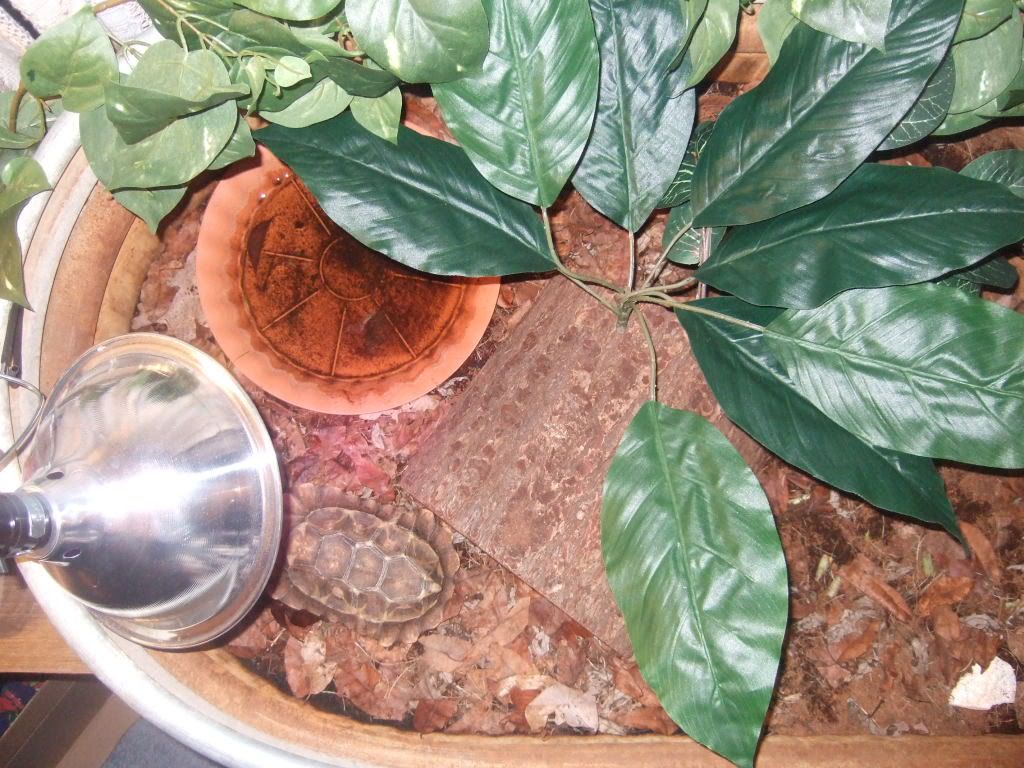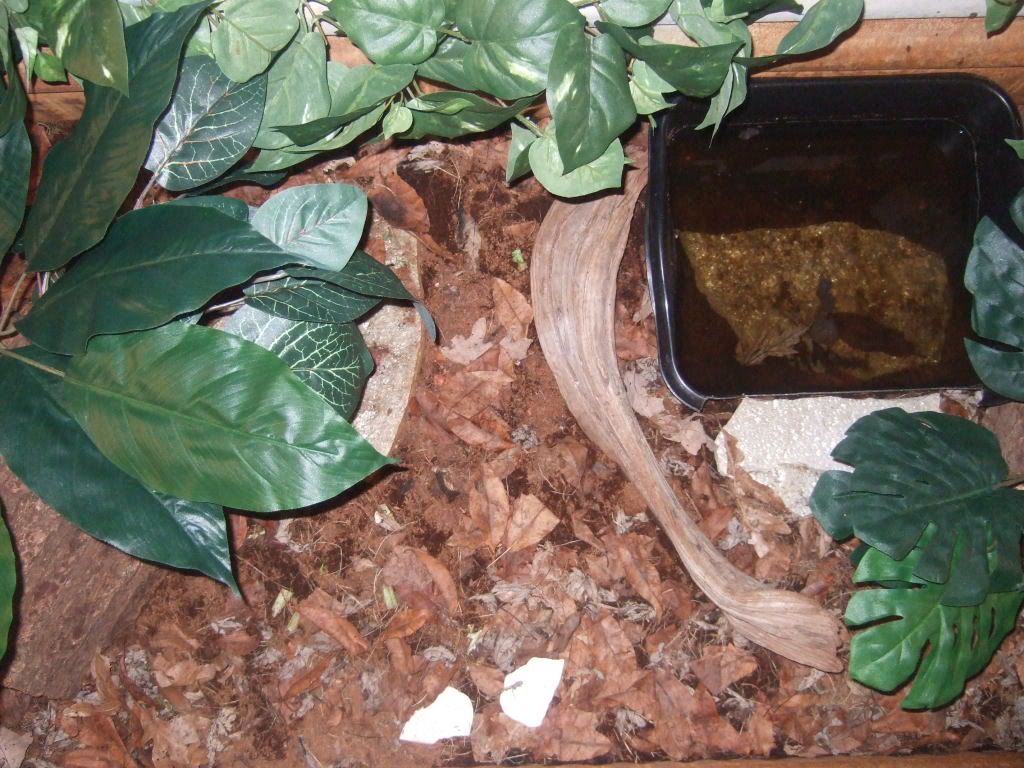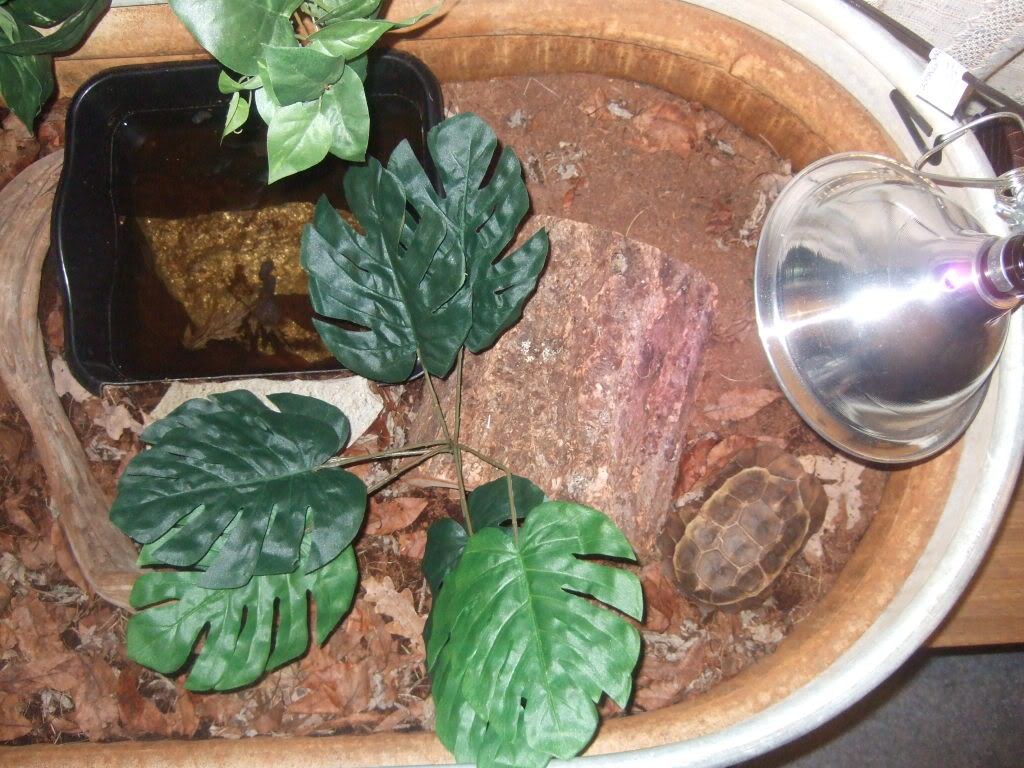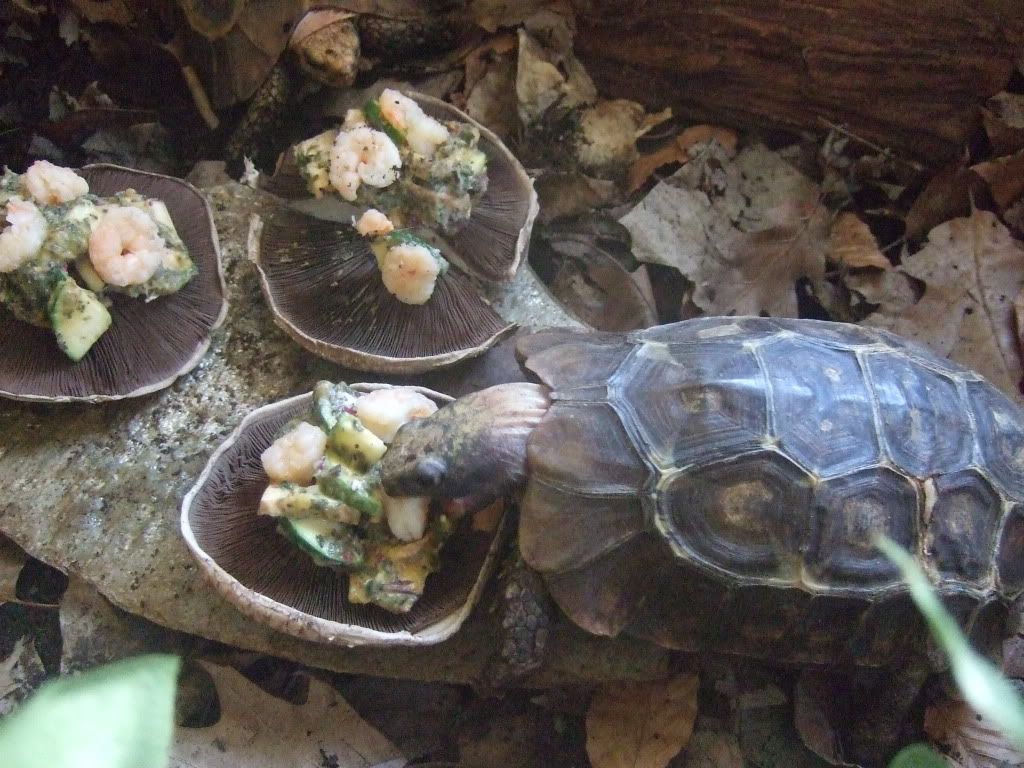- Joined
- May 2, 2012
- Messages
- 9
Hi. I am a new tortoise owner. I have had my Forest Hingeback tortoise, Violet, for a little under a year. Let me give you some back history first. I bought Violet from a rinka-dink little pet store who had her in a small cage, and didn't even provide a heat source for her. They claimed she was healthy and she did seem fine and active. Over the past few months, she never seemed to want to eat. I would let her wander about our main level (kitchen/living room) and she would readily eat cheerios my daughter would leave on the floor (BAD I KNOW!) but she never eats the spring mix lettuce I provide for her. Occasionally she would eat fruit. A month ago her back left leg started limping so I took her to a reptile specialist. She said two things, 1) her leg was NOT broken, 2) some organ must be pressing on her nerves, causing the paralysis. So, they tested her for bugs and sure enough they said she was loaded with parasites. =( She was put on a 3 day treatment which seemed to do the trick... and I carefully force fed her a small amount of pureed pees to get food in her. She had 3 good poos which I did peek through and found lots of dead worms. Since that time she has been walking just fine, and is much less lethargic seeming. HOWEVER, it has been now 3 weeks since the initial parasite treatment and she still won't eat, and not pooed again either. I decided about 2 weeks ago to stop force feeding her in order for her to feed on her own. I ONLY am offering spring mix lettuce, because the vet said too much fruit could cause parasites. The only thing she has chomped at, once, was a cuttle bone I provided for her. She has still been fairly active, tromping around her cage. I have ceased to let her wander about our home, so she has a more stable, less stressful, and comfortable environment. ANY INFORMATION OR SUGGESTIONS IS MUCH APPRECIATED!! And, yes I know my initial care for her may not have been ideal, but now I am trying my absolute hardest to help her, please not condemn me for my lack of good judgement.
Oh, and about her set up... she is in a 40g breeder size glass tank, because she is a mediteranian tort needing higher humidity, I mist her cage 3-4 times a day. The basking side temp is around 85 and the cooler side is 70 and she has a large pool to soak in freely. She has a heat bulb with UVA and a UVB 10.0 bulb.
Oh, and about her set up... she is in a 40g breeder size glass tank, because she is a mediteranian tort needing higher humidity, I mist her cage 3-4 times a day. The basking side temp is around 85 and the cooler side is 70 and she has a large pool to soak in freely. She has a heat bulb with UVA and a UVB 10.0 bulb.



